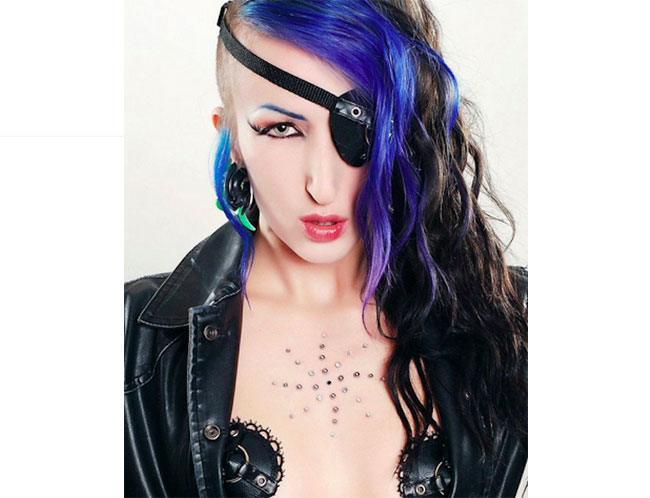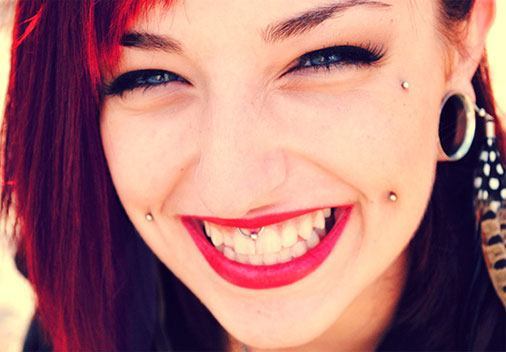A body fashion that can make you say ‘Ouch’ is trending among style goers! Have you ever noticed a woman wearing small metal beads on the surface of her skin? Yes! That’s dermal piercing. It can be done on any parts of the body, be it neck, ears, eyes, tongue, back etc, where regular piercing could be difficult for decorating purposes. After body tattoos, dermal piercing or single-point piercing, as a part of body modification, has been picking up the craze.

source: buzzfed.com
[Also Read: 6 Places On Your Body Where Tattoos Don’t Hurt Much]
Difference between ordinary piercing and dermal piercing –
In the ordinary piercing, there is entry as well as exit point that makes wearing jewellery like tops or rings easy and a less pain free. While in dermal piercing, one end of the jewellery is punched in the dermal layer of the skin while other side carries the ornament that you can flaunt on the skin.
Multiple dermal piercing, when placed in a designer pattern or on tattoos, could make bedazzled body art.

How Dermal Piercing is Done?
Dermal piercing is done using the anchor, which is inserted under the top layer of the skin i.e. the dermis. The anchor holds the jewellery that you want to wear on that area of your body.
[Also Read: Labret Piercing]

[Also Read: What exactly is Cartilage Piercing?]
Choosing Dermal Anchor
A good dermal anchor cuts down the probability of any infections or piercing rejections. Go for either surgical steel made anchor or titanium skin drives. The quality of anchor for dermal piercing has to be good. Also, always get the piercing done from a skilled practitioner.
[Also Read: Dimple Piercing]

source: buzzfed.com
What is called dermal piercing rejection?
[sc:mediad]
When a dermal anchor is inserted in body, there are chances that body cells consider it as a foreign object. When body cells treat foreign objects as a threat to health, they try their best to heal the skin and remove the object from body. In such scenario, body rejects to accommodate dermal anchor and piercing gets healed. This is called dermal piercing rejection. However, the rate of rejection in dermal/micro dermal anchoring is only 2% but you must take proper care of the pierced body part to avoid probable rejection.|

source: buzzfed.com
How to Care Post Dermal Piercing?
After the dermal piercing is done, it is covered with a band aid or any dressing till the time the pierced area gets healed. In those few days, it is advisable to ensure care and safety.
1.It takes one to three months for piercing to heal. You will need to protect the piercing from any accidental removal or pulling, which may damage the tissues to which anchor is attached.
2.While drying your body post bath or while wearing clothes, do take care.
3.Don’t wear fabrics having holes, which may tangle the pierced ornaments into it.
Cleaning Pierced Area
After bandage is removed, you must use salt solution to clean the piercing at home. Simply take a cup of warm water and dissolve 1/4 teaspoon of non-iodized salt into it. Apply or spray it on the pierced area twice or thrice a day. Use new tissue paper every time you dry the piercing to avoid any infections.
[Also Read: Cuffs for Pierced Ears]
Bored? Now Want to Remove the Piercing!
Removing dermal piercing needs a skilled approach and must be done by a professional. Do not pull it out on your own, as it may hurt and damage the area. Generally, the pierced area is gently massaged to dislodge the piercing from its location. For an old piercing, removal could be difficult due to growth of tissue on the anchor, over the period of time.
Some celebrities who have got dermal piercing done are – (This could also serve as dermal piercing ideas for you)

Are you inspired to get the dermal piercing done? It is here to stay for long, for sure!
